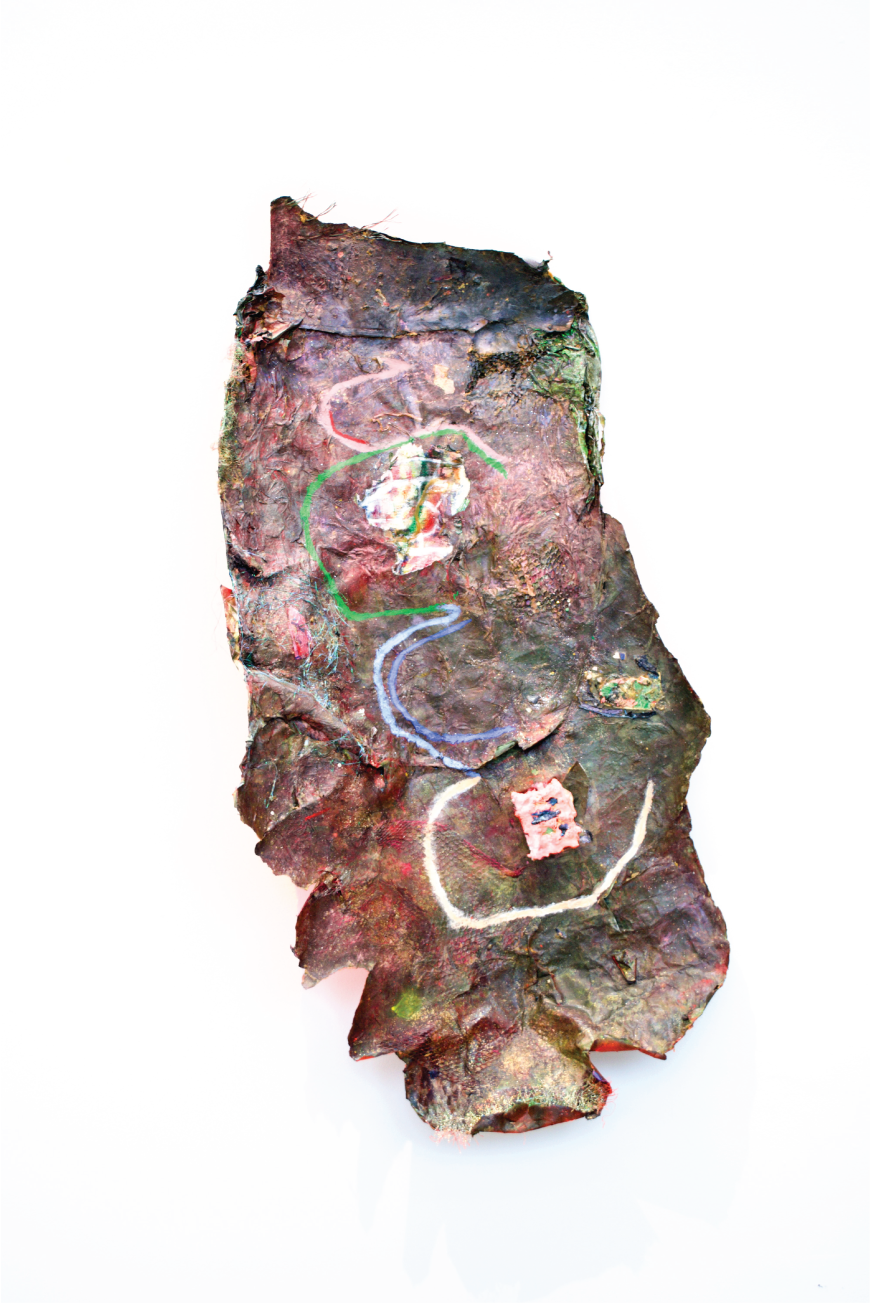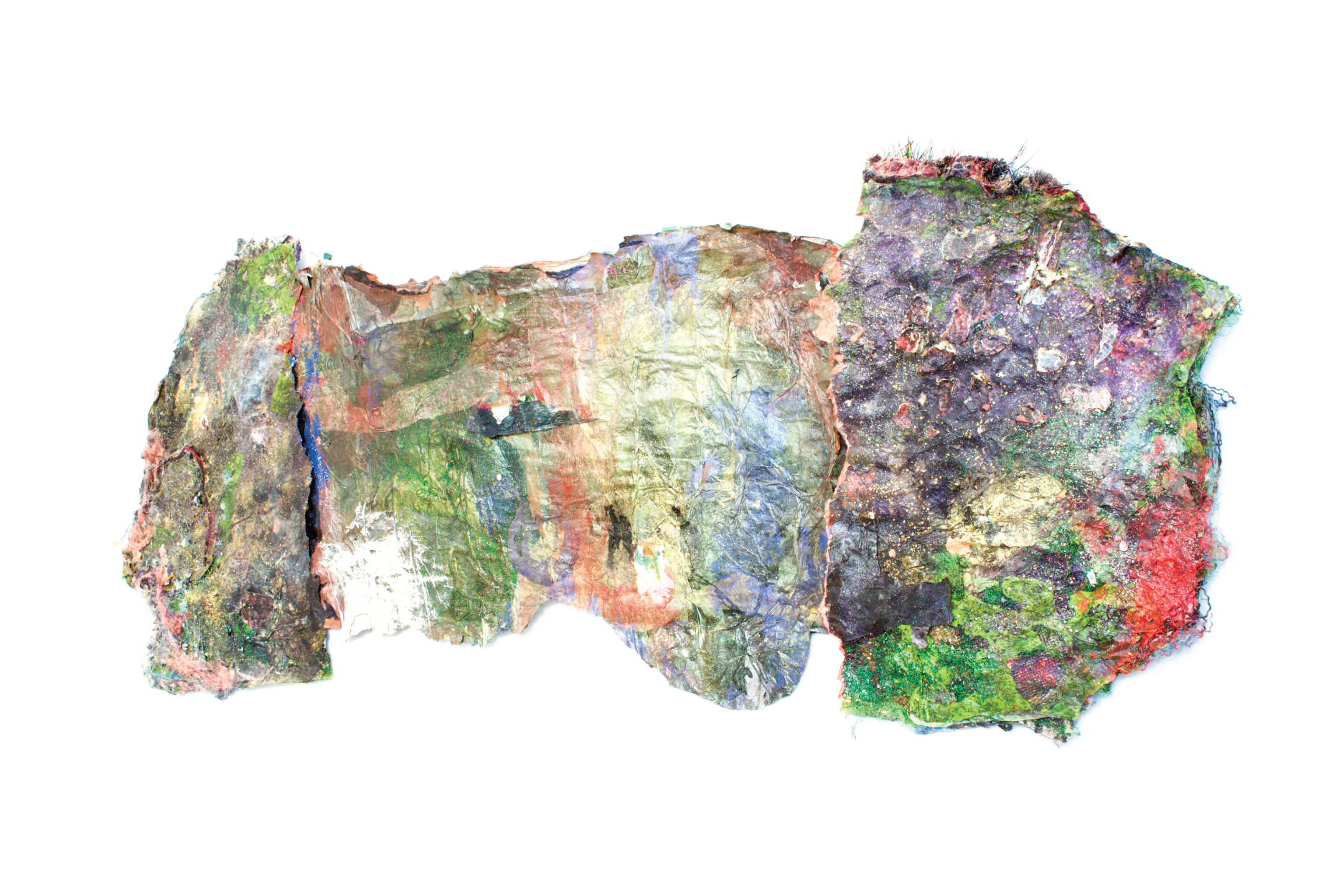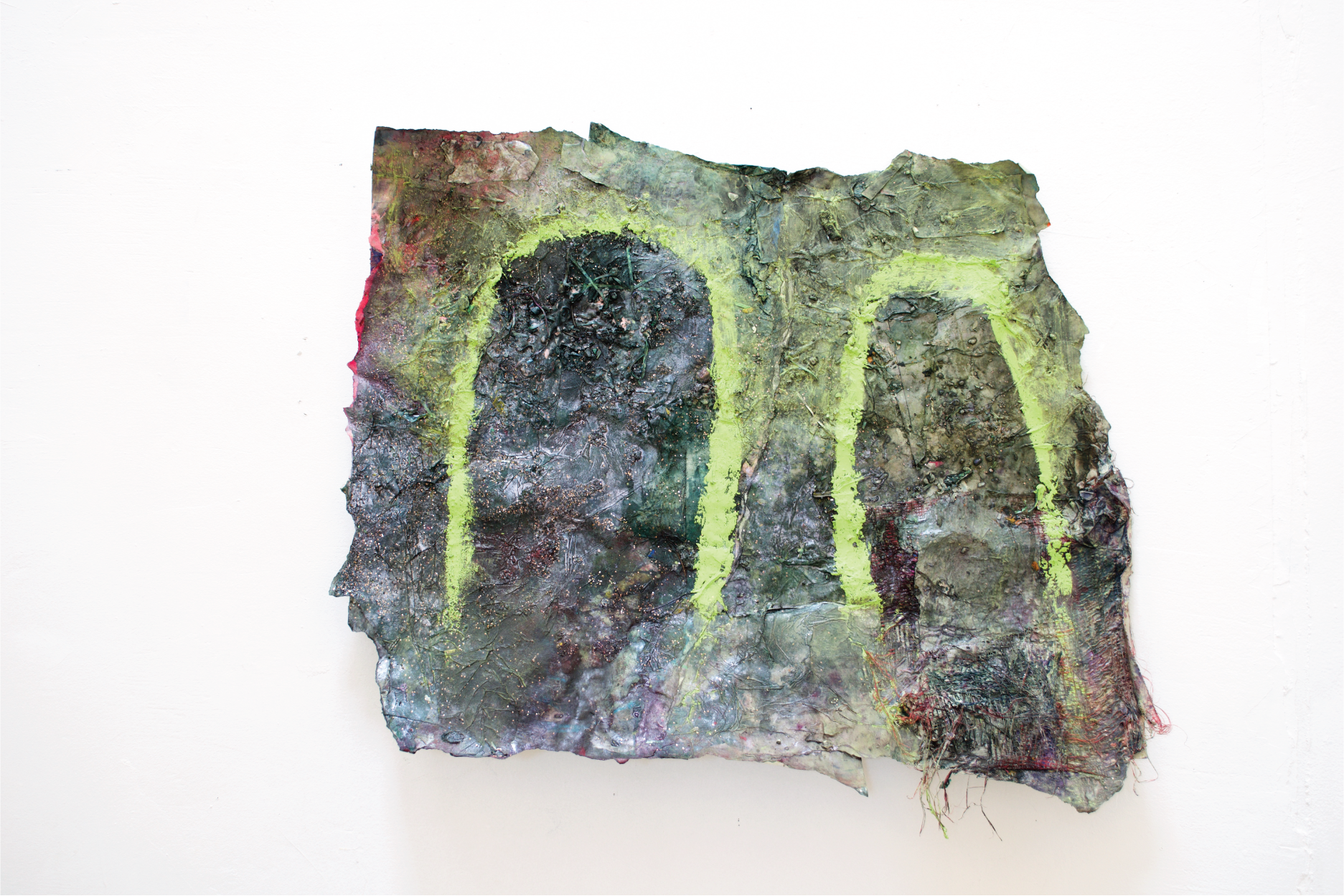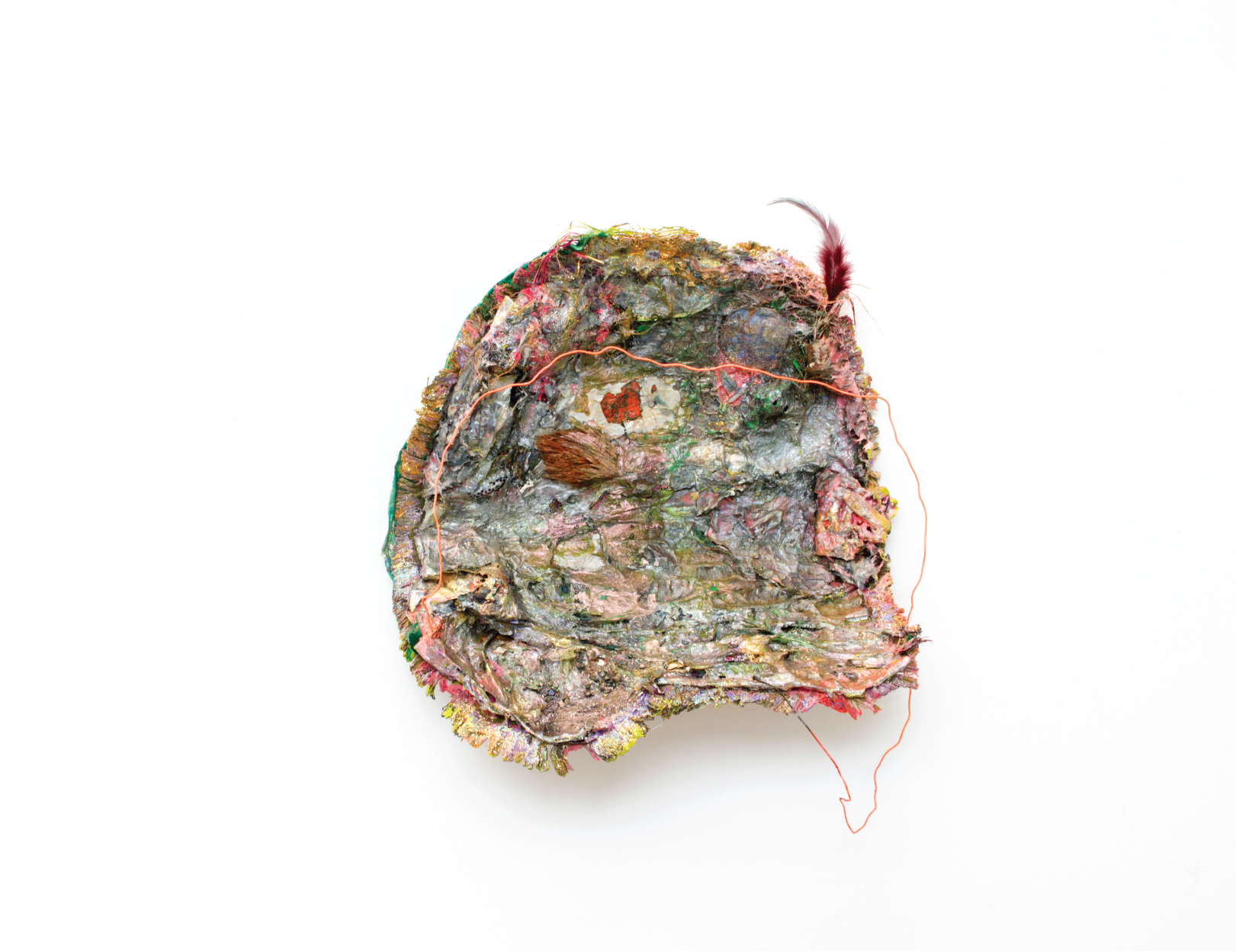Erin Langley gleans, filters, and re-metabolizes found and cast-off materials into complex assemblages that reveal toxic histories. These bricolages examine unfathomable networks in cycles of proliferation, contamination, and decay. Pseudo-naturalistic, the forms are ambiguous and pulsating, suggestive of the necropastoral: graffiti on rocks, bowerbirds’ mating displays, lingering pesticides in soil. The past consumes our futures and infects our present.
Notes on Marks and Surface
Some marks are indicative and some are obscure. Most are both. Because there is graffiti there is graffiti cover-up—places where people who own or maintain property have attempted to obscure acts of vandalism with industrial paint. Offensive language and symbols require the quickest solution, and there is no time to waste. Often the cover-up does an adequate job masking the graffiti underneath, but a poor job at integrating the cover-up with the rest of the building, wall, what have you. It's rare that the cover-up matches the original paint, and who can be blamed? Any attempt at searching industrial paint colors by name is futile because these are cryptograms developed by robots to attach obscure language to colors in adherence with market trends and statistics beyond our grasp and control.
Our eyes are drawn to these blotchy areas of makeshift color—a skin is formed, but in no way suggestive of flesh. These marks—layered, zig-zaggy passes with an overloaded roller brush—have a haphazard, frenzied quality. They say good enough! while wiping their palms on the thighs of their pants and getting on with their day.
Roland Barthes wrote that there is no pure surface because everything is always, already, rough, discontinuous, set in motion by some accident. Once introduced to a surface, the splotches of not-quite-terracotta and almost-robin’s-egg-blue—colors so innocuous in the can— suddenly assert themselves as highlight: spotlighting the blemish in their pathetic attempt at camouflage. The eye sore is covered, producing a new eye sore. The marks build up over the years, forming shapes—towns, cities, states, countries—ultimately obscuring the original surface of the exterior paint as it fades into obscurity. The marks on the surface of the asphalt are made by workers in sturdy clothing with various colors of spray paint. White, usually, to contrast with the darkness of the asphalt, but sometimes (if you’re lucky) fluorescent pink, orange, green, or yellow. The white marks say there is something under here. The fluorescent marks say THERE IS SOMETHING UNDER HERE! Upon encountering these marks, the general public becomes suddenly aware of their feet touching a surface—its contours, its textures—is this a highlight or a warning? A general sense of the subterranean makes itself seen but we can’t be exactly sure how or in what exact way.
There are usually symbols, numbers, or letters that clarify things further to people who make and read such marks, but not to us, not to me. What is under there? Dirt, roots, pipes, carbon, wires, electricity, sewage, internet, water, pebbles, rocks, stones, and bugs with mandibles and pincers and infinite legs or none at all.
Someone will come by, later, with a machine and dig into the earth here. The machines are clumsy and imprecise—jackhammers, back hoes, skid steers—and we’ll wait for them to do their work as we sit in traffic, or stumble across the safety tape and turned earth on foot to get where we need to go, plugging our ears at the sound.



